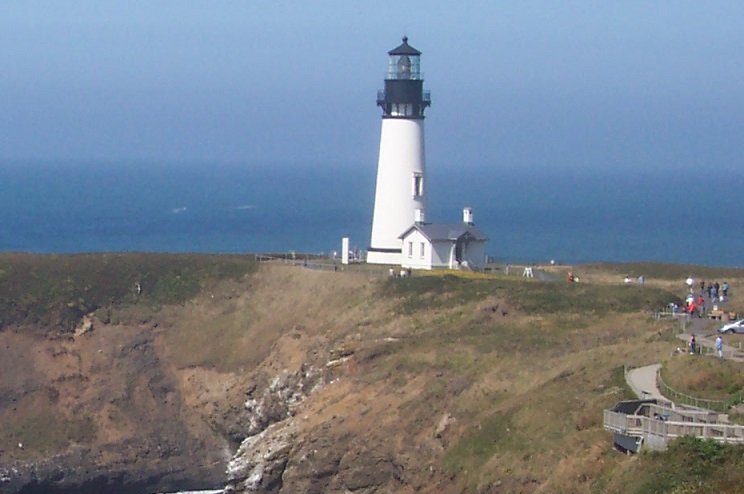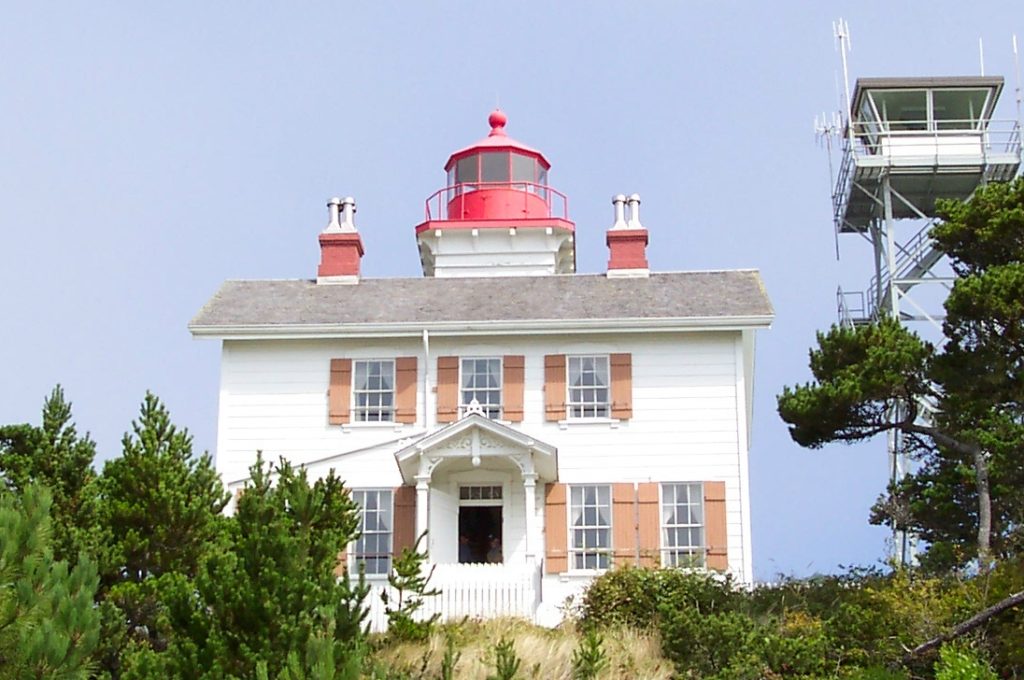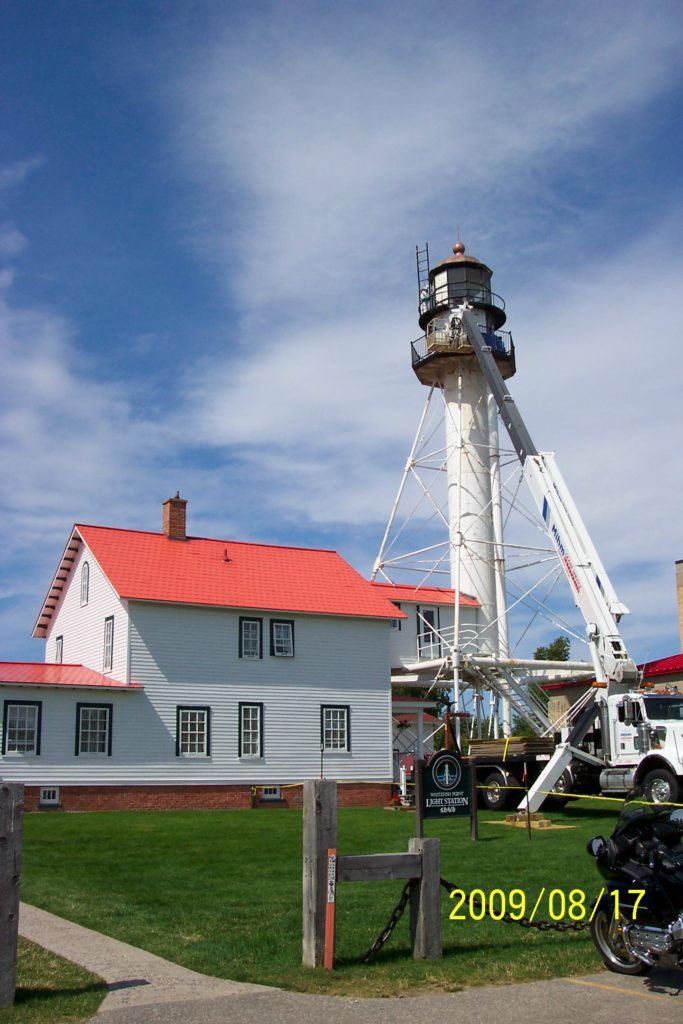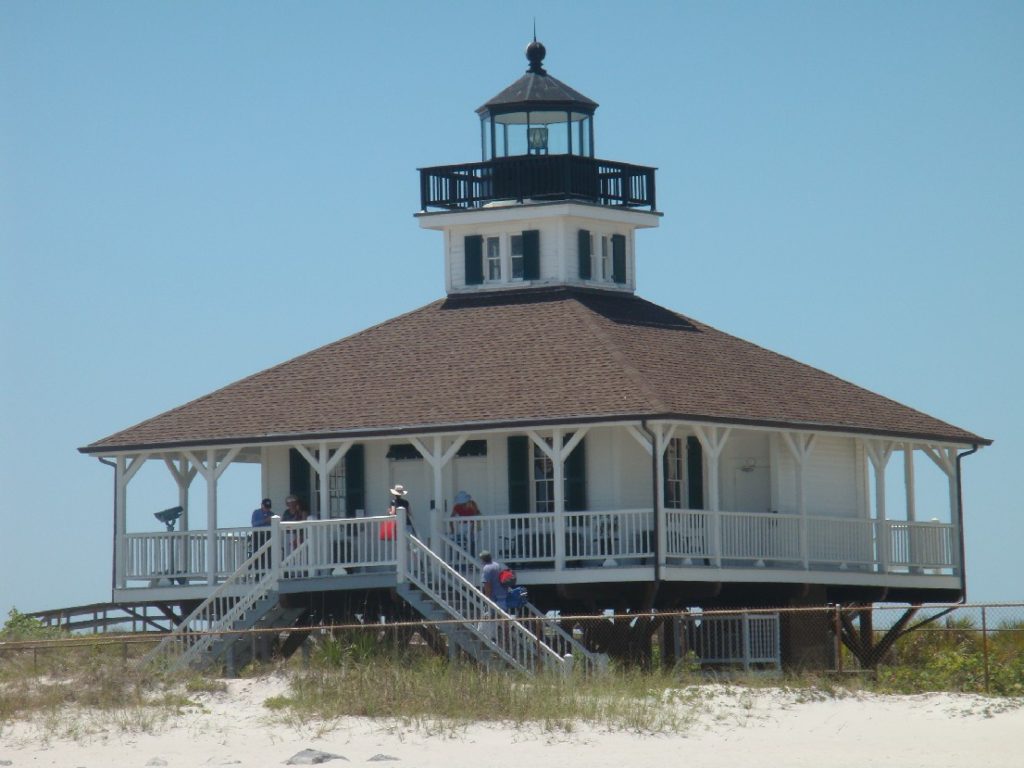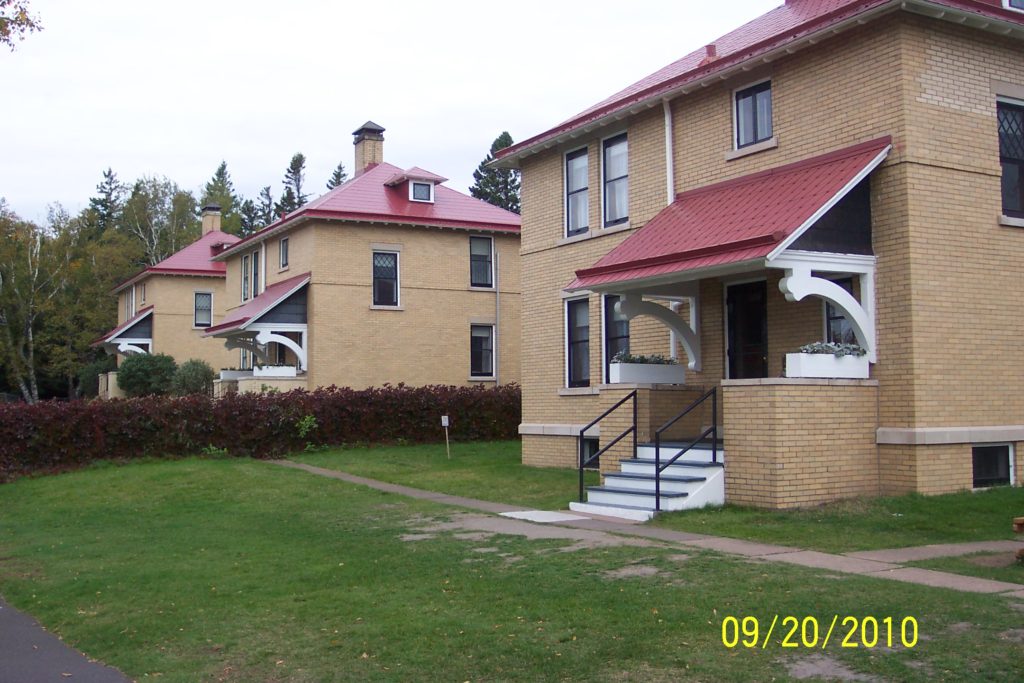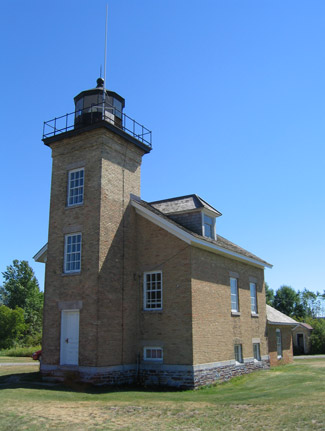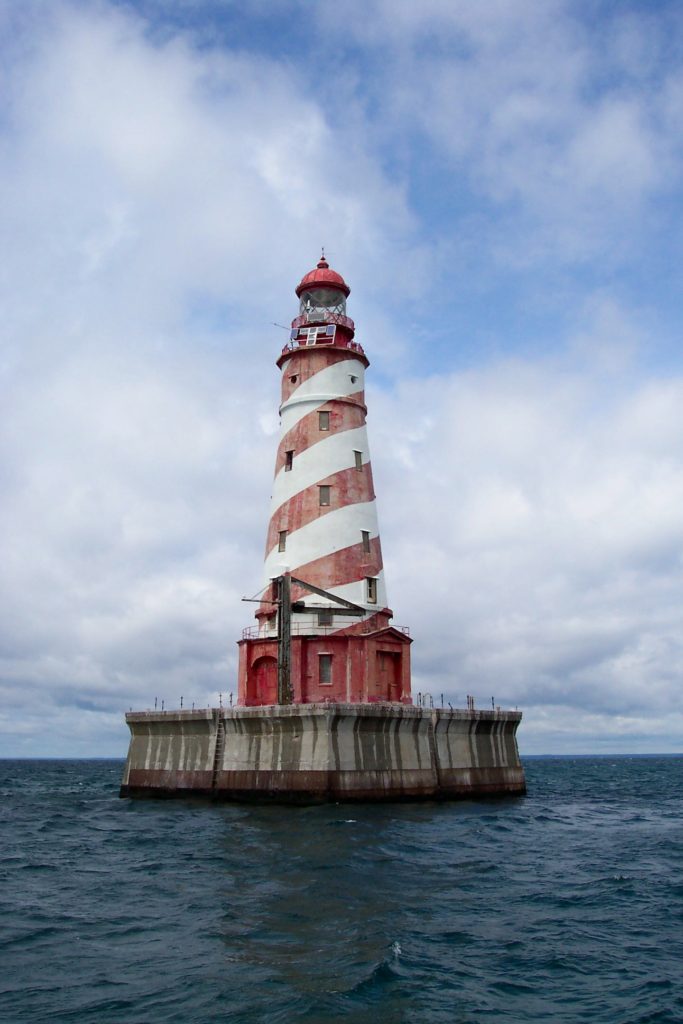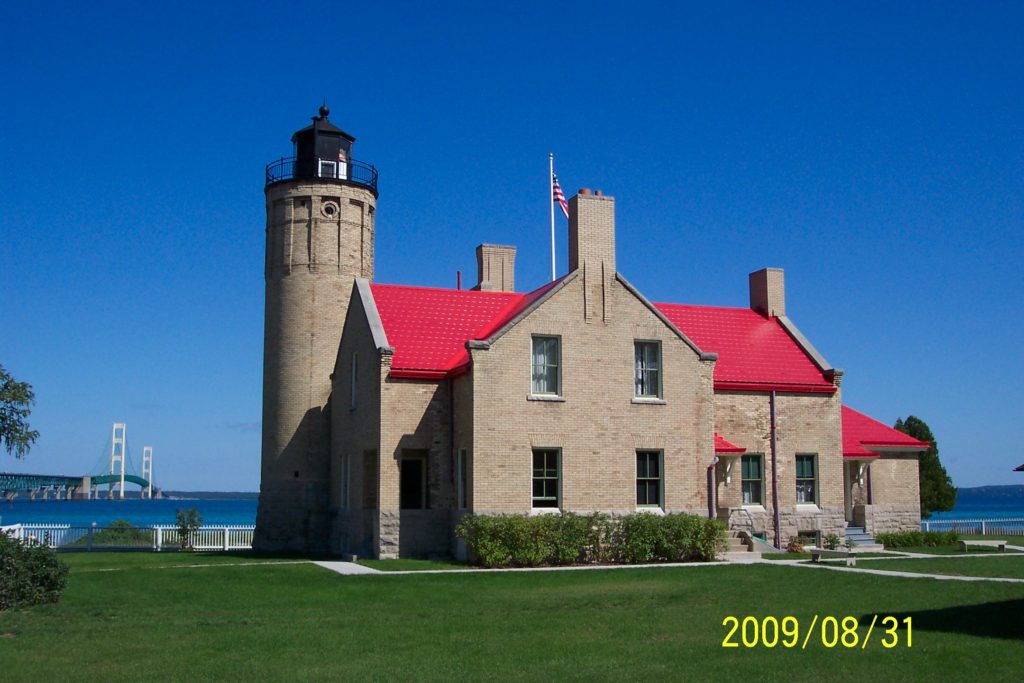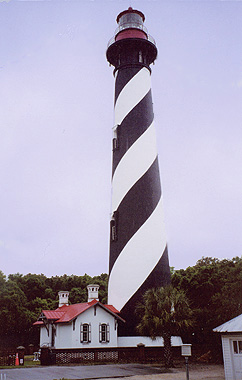Many lighthouses are tall brick or stone conical towers, such as the Little Sable tower shown on the main lighthouse page. Most folks think of this shape when they think of lighthouses. The first photo below shows another of this type – the YAQUINA HEAD lighthouse on the Oregon coast. The other two photos are also of common types. In the center photo, the light is housed in a structure, called the “Lantern”, that rises out of the roof of the keeper’s house. This one, YAQUINA BAY, is also in Oregon. Another common type is seen in the rightmost photo. This is the WHITEFISH POINT lighthouse, on Lake Superior, just west of Sault Ste. Marie, in Michigan. There are also lighthouses built completely offshore, on a rock ledge, or a created concrete caisson. Visit the “Lighthouse Friends” website to view Minot’s Ledge in Massachusetts, or Tillamook Rock in Oregon, two of the most unique lighthouses in all of the U.S.
LIGHTHOUSES
We have learned much about lighthouses, their operation, history, and lore, and would like to share it with you. So these pages will include some lighthouse information and lore, as well as photos of all of the places we’ve been, and links to some very interesting websites about lighthouses too. Then you too can claim to be a “Pharologist”, one who studies lighthouses.
By the way, if I asked which state has the most lighthouses, most folks quickly answer, “Maine.” But that is not correct. Maine is number three. Think about it. The answer will be found somewhere below.
THE LIGHT STATION – As noted earlier, the lighthouse “TOWER” was just one of many structures that was part of the light station. The photos below show some of the more important of these.
After the tower itself, perhaps the most important building at a light station was the KEEPER’S RESIDENCE. Contrary to what many people believe, the keeper and his family did not live in the “lighthouse” – the tower with the light. Land-based stations almost always included a residence for the primary keeper. Sometimes it was actually attached to the light tower, or if not was close by. Sometimes these residences were shared by a keeper and an assistant – and their families. Many stations had more than one residence. A few pictures of lighthouse residences are shown below. In the course of their volunteer travels, we have been fortunate to have actually lived in eight different keeper’s residences.
The leftmost photo of the Boca Grande, FL, lighthouse shows the “cottage style”, with the light tower and lantern protruding from the roof of the keeper’s residence. The center photo shows two of the three residences at the Split Rock, MN, station, where the head keeper had two assistants. The rightmost photo is of one of the “schoolhouse” stations common to the Great Lakes. This one, at Ontonagon, MI., shows the residence attached to the light tower.
The leftmost photo below is of the Oil House at the TAWAS POINT, Michigan station. These were built when kerosene, a much more combustible fuel than whale and lard oils used earlier, came into use in the lighthouse lamps. The center photo below is of the Fog Signal building at 40 MILE POINT, also on Lake Huron in Michigan. Most major lighthouses had a device to sound a warning when fog obscured the beam of the light. Early on bells were used; then steam-powered whistles. Steam whistles were replaced by air horns, shown here, powered by large air compressors in the building below. Light stations also had one or more boats for the use of the keepers. They were pulled up out of the water and kept in boathouses, such as the one shown on the right, located at AU SABLE, Michigan Light Station. Barns for livestock, sheds, garages, and privies would also have been part of the scene at most sites.
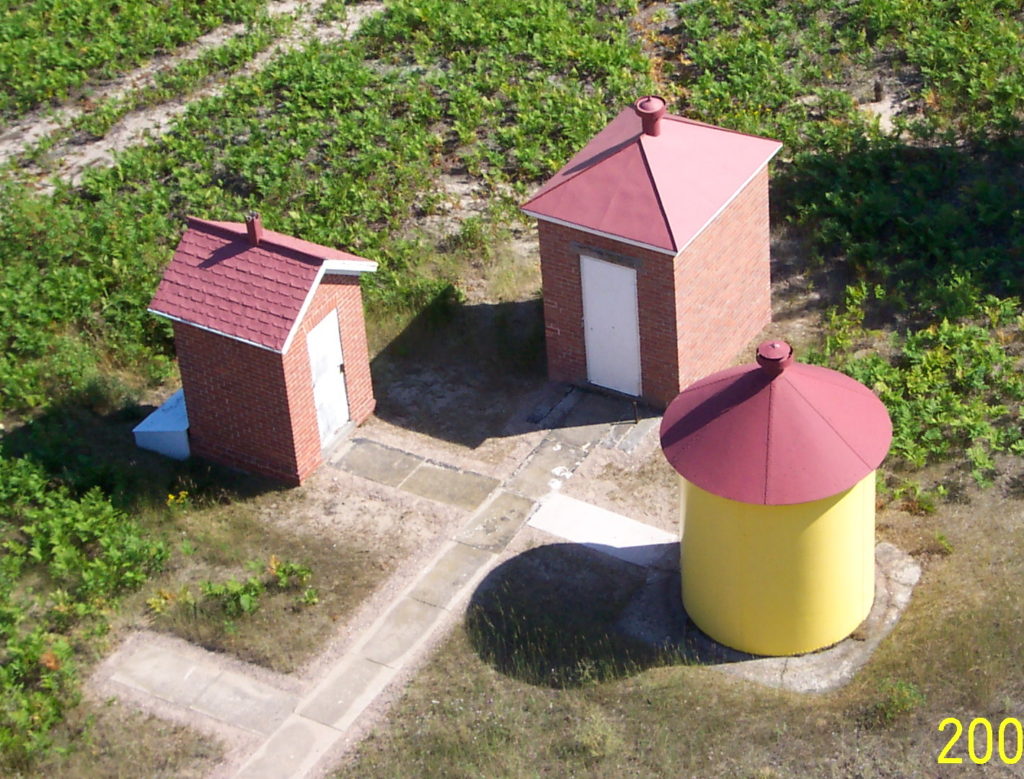
The photo above shows two different types of “oil houses” at the AU SABLE, Michigan, light station. The center one is of brick; the rightmost structure is one of the round metal (lined with brick) round ones seemingly unique to the Great Lakes. The left-most structure was perhaps the most important one at the station – the PRIVY !
MOST LIGHTHOUSES – The state that had, and still has the greatest number of lighthouses is – MICHIGAN ! Think about it. Michigan is two peninsulas, surrounded by the waters of three of the Great Lakes, lakes that were and are heavily used by commercial ships. New York is number two by the way.
DAYMARKS – The primary purpose of a lighthouse is to enable the mariner to determine his location along the shores both day and night. Just as the light from each lighthouse had to have a unique appearance, its “Characteristic”, so too did the daytime appearance of each light have to be unique in some way. Often it was simply the location of a lighthouse, up on a high bluff for example, or on an island. Often too it was simply the type of architecture, a “schoolhouse” type, or a “cottage style” light. Often too the light towers were painted in some unique way. Think of the Cape Hatteras, North Carolina, lighthouse with its famous black and white spiral stripes. West Quoddy Head lighthouse in Maine has red and white horizontal stripes. Interestingly, the St. Augustine, Florida, lighthouse also has black and white spiral stripes, just like the one at Cape Hatteras, but if a mariner didn’t at least know if he was off the coast of North Carolina or the coast of Florida, no lighthouse would have helped him very much.
The left photo above is of the WHITE SHOAL, Michigan, lighthouse, out in the northern reaches of Lake Michigan. It is one of the few red and white lighthouses in the U.S. The middle photo is of the MACKINACK lighthouse, also in Michigan. It’s unique architecture alone is enough to allow the mariner to identify it. Interestingly, this lighthouse was taken out of service when the nearby Mackinack Bridge, a miles long suspension bridge connecting lower Michigan with the Upper Peninsula, was opened. The bridge alone, well lighted, precluded the need for the lighthouse there. The right photo is of the ST. AUGUSTINE, Florida, lighthouse. As noted above, it has the same black and white spiral striping as does the Cape Hatteras, North Carolina, lighthouse several hundred miles to the north. St. Augustine has a red lantern on top; Cape Hatteras has a black lantern.
Several more links to other lighthouse information appear below.

